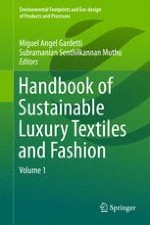
2015 | OriginalPaper | Buchkapitel
The Lotus Flower Fiber and Sustainable Luxury
verfasst von : Miguel Angel Gardetti, Subramanian Senthilkannan Muthu
Erschienen in: Handbook of Sustainable Luxury Textiles and Fashion
Verlag: Springer Singapore
Aktivieren Sie unsere intelligente Suche, um passende Fachinhalte oder Patente zu finden.
Wählen Sie Textabschnitte aus um mit Künstlicher Intelligenz passenden Patente zu finden. powered by
Markieren Sie Textabschnitte, um KI-gestützt weitere passende Inhalte zu finden. powered by